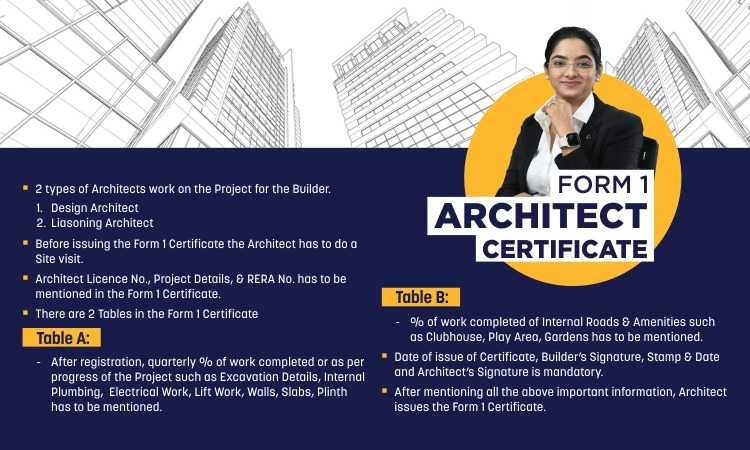In the world of construction and real estate development, Form 1 Architect Certificates play a crucial role. These certificates are not just pieces of paper but are integral to ensuring that a project is compliant with regulations and standards. In this blog, we will delve into the key aspects of Form 1 Architect Certificates, shedding light on their importance, the types of architects involved, and the information they contain.
Types of Architects on the Project
When it comes to construction projects, architects are at the forefront of design and compliance. Two main types of architects are typically involved in a project:
Design Architect: This architect is responsible for the overall design and aesthetics of the project. They are tasked with creating a functional and visually appealing structure that aligns with the client’s vision.
Liasoning Architect: The liasoning architect, on the other hand, plays a crucial role in navigating the bureaucratic aspects of construction. They ensure that the project complies with all the necessary regulations, permits, and approvals.
Site Visit – A Prerequisite
Before issuing a Form 1 Certificate, one essential step is a site visit. The architect needs to physically inspect the project site to ensure that the construction is progressing as planned and adhering to the approved design.
What Information is Included in Form 1 Certificates?
Form 1 Certificates are official documents that contain vital information pertaining to the construction project. This includes:
Architect License Number: This unique identifier helps verify the architect’s qualifications and credibility.
Project Details: A comprehensive overview of the construction project, including its scope, location, and purpose.
RERA Number: The Real Estate Regulatory Authority (RERA) number is critical for ensuring that the project complies with local real estate regulations.
Tables A and B
Form 1 Certificates typically comprise two tables:
Table A: This table is used to record the percentage of work completed for internal roads and amenities such as clubhouses, play areas, and gardens. This information is essential for tracking the project’s progress accurately.
Table B: While the specific contents of Table B may vary, it often contains additional project-related details and compliance information.
Date of Issue and Signatures
To validate the Form 1 Certificate, it must include the following:
Date of Issue: This signifies when the certificate was issued, providing a reference point for the project’s status.
Builder’s Signature: The builder’s signature confirms their acknowledgment of the project’s progress and compliance.
Stamp and Date: The official stamp and date add authenticity to the certificate.
Architect’s Signature: Lastly, the architect’s signature is vital, as it attests to the accuracy of the information presented in the certificate.
Conclusion
Form 1 Architect Certificates are essential documents in construction projects, ensuring that everything proceeds according to plan and complies with local regulations. By understanding the roles of different architects, the importance of site visits, and the key information within these certificates, stakeholders can navigate the complex world of construction with confidence. These certificates serve as a testament to the hard work and dedication put into each project, safeguarding both builders and clients alike.



